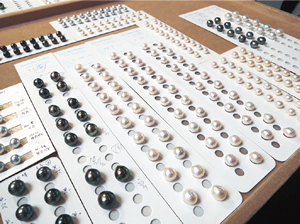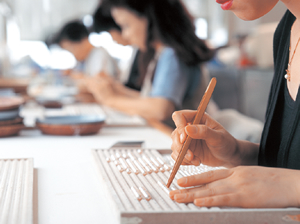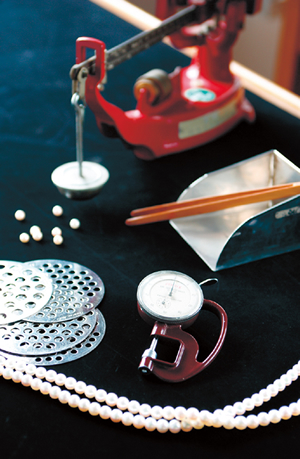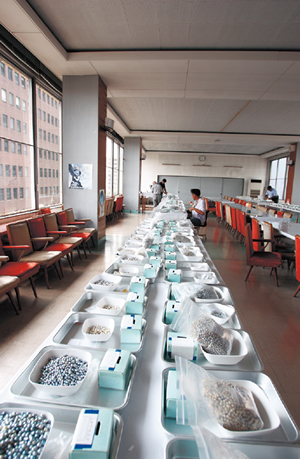niponica is a web magazine that introduces modern Japan to people all over the world.
2014 No.14

To read the e-book you need to have JavaScript enabled in your browser and a free Flash Player plug-in from Adobe Systems Inc. installed.
Splendor and Sparkle in Japanese Culture

Luster from the Sea:
Japan’s Treasured Pearls

An artisan sorts pearls one by one, categorizing them by size, color, maki (the thickness of the mother-of-pearl layers), and teri (the luster shining through from inside). The work is done in natural light.
Kobe, world center for the pearl industry
Pearls were a bright spot in Japan’s export trade from the 1950s to the mid-1960s. They inspired women’s couture trends and were sought after in high society, by Hollywood actresses and beyond. Fashionistas fell in love with “pearls from Japan,” and male visitors from abroad would buy them for their sweethearts and family members. These were boom times for Japanese pearls.
The hub of the pearl industry was Kobe, already well-established as an international trade port. Situated in Hyogo Prefecture on the Seto Inland Sea, Kobe lies between major cultivation centers like Uwajima, Ise and Kyushu, and it had long served as a distribution center for pearls. Added to the advantages of its geographical location was a topographical feature north of the city—Mount Rokko. The sun’s rays strike the mountain from the south, to be reflected back by the green mountain slopes as a soft light filtering down from the north. Experts say that a dependable source of natural light from the north, like the light from Mount Rokko, is essential for the precise evaluation of pearl quality. Kobe meets that condition, and so it was that artisan pearl experts flocked there.
International traders also came in large numbers. “Pearl City Kobe,” the city’s moniker, was bandied about more by people from abroad than by the Japanese themselves. A short story by Somerset Maugham features a man going to take a look at the Japanese pearl business, along with someone working in the American Consular Service in Kobe. The comic actor Charlie Chaplin is said to have bought pearls for his wife while honeymooning in Kobe.
Pearls organized in pairs, mostly for pierced or ordinary earrings. A special talent is required to identify “twins” that are identical in size and hue.
“Japan Quality”
Among connoisseurs today, just as in the past, common wisdom has it that if you want the best pearls, you go to Kobe. The city combines the skills of discerning eyes, the techniques of experts, and the attention to detail of the Japanese. These three are taking pearls to ever more illustrious levels.
Today, 80% of the world’s pearls pass through Kobe, on their way to markets around the globe. After passing through the hands of Kobe artisans, their value rises even more. “Japan Quality” is very much alive in the world of pearls.
Japan’s pearls are a shining light in the world of beauty, continually fostered by work and talent.
Gauges to measure the diameter and screening plates with holes named “Furui” to separate pearls by size are some of the tools for classification.
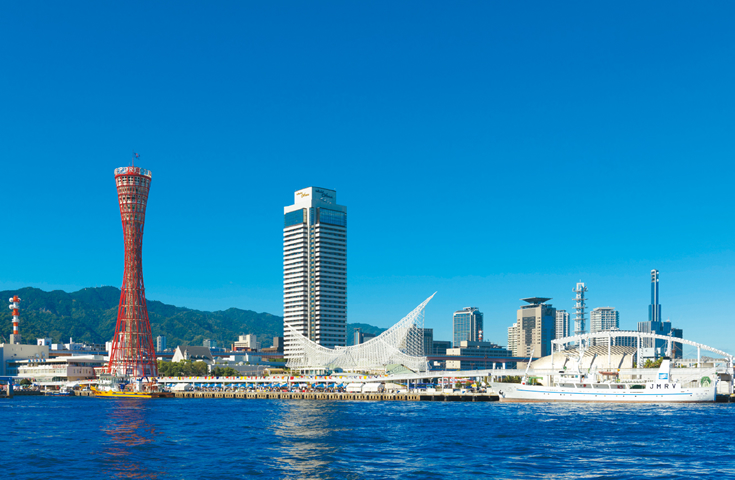
The international port of Kobe. Mount Rokko forms a backdrop to the city, and the sun’s rays, reflected back from the mountain slopes, are an ideal form of natural light for handling and evaluating pearls.





